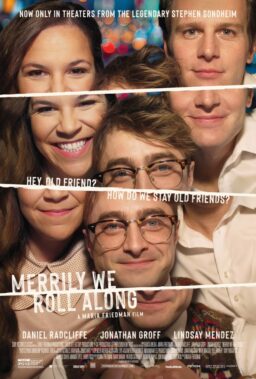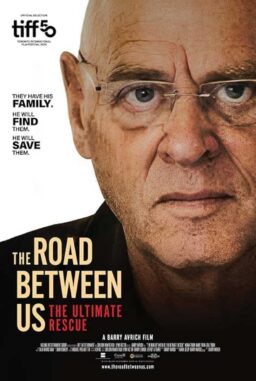Thumbnails is a roundup of brief excerpts to introduce you to articles from other websites that we found interesting and exciting. We provide links to the original sources for you to read in their entirety.—Chaz Ebert
1.
“Clare Cooney on ‘Runner’“: At Indie Outlook, the Chicago filmmaker chats with me about her prize-winning short set to screen Friday, December 1st, at Oakton Community College’s Pop-Up Film Festival in Des Plaines, Illinois.
“This guy knows where Becca lives, and when he corners her, she has no idea what he will do. Maybe he’ll just ask her not to tell anyone or maybe he’ll resort to other methods to silence her. Regardless, the ways in which he asserts his dominance and authority over the situation is so typical of the power dynamics in society. It was all very familiar to me. Everyone spoke in whispers about what was happening at Profiles Theatre because no one—particularly no woman—wants to cause a problem. Women have been taught not to do that. I’ve been on films where the majority of the people on the crew are men, leaving women without an advocate onset. When there is a problem, they don’t have a safe way to speak up. As actors, we are pretty powerless, and as a female actor—who is being paid only so much a day and is lucky to have work—causing a stir and creating a blockade in a predominantly male production is avoided at all costs. That’s why we need more female directors and a much stronger female presence on film sets. You should always feel that you have agency. If enough people refer to a guy as ‘a great director,’ and in the back of your head, you’re like, ‘He touched me in this weird way at rehearsal,’ for social reasons, for politeness’ sake, for your career’s sake, you just kind of go, ‘Let’s move on.’ This happens in many industries, but the film and theatre industries are complex because they require you to share so much of yourself in your work, whereas other jobs would tell you to leave all that at home. To some extent, you have to be present and bring your fears and insecurities along with you. Otherwise, you are creating soulless art.”
2.

“Uma Thurman, Ready to Be Tested“: The Oscar-nominated actress chats with Alexis Soloski of The New York Times about her new Broadway show, “The Parisian Woman.”
“Though ‘The Parisian Woman’ traffics in questions of sex and power, any discussion of these real-world events ‘never made its way into the rehearsal room,’ Ms. MacKinnon said firmly. Inside that room, a few days before the actors were to move into the theater for technical rehearsals, Ms. Thurman clacked onto the temporary set in teal heels, prop phone in her hand, gemstone glint in her eye. With mischief and languor, she subdued her lover (Marton Csokas) and teased her husband (Josh Lucas). (Mischief extended to her downtime, too. When this reporter slunk into the room, Ms. Thurman called brightly, ‘Write some fake news for us today!’) The blocking for the scene wasn’t set yet; the pacing juddered. But when Ms. Thurman lobbed a line like, ‘I can’t control who falls in love with me,’ it landed. Ms. MacKinnon occasionally stopped the action to offer a suggestion. Sometimes the suggestions were Ms. Thurman’s. Maybe she could speak an early line more lightly. Maybe she should cross the stage later. She asked Ms. MacKinnon if she could sit during an argument with Mr. Csokas’s character, the better to soothe him. ‘It’s physical de-escalation on an oppositional line,’ Ms. Thurman explained with typical hyperarticulacy. Rehearsing a play has required some adjustments in the ways she attacks a role. Her method is still what Mr. Tarantino described as motivated by emotional connection to a character and ‘from the inside out,’ he said. ‘She’s not surface, right?’”
3.

“Reel Dilemma: are we condoning the conduct of Hollywood’s tyrants by watching their films?“: Asks The Guardian‘s Xan Brooks.
“‘The Third Man’ was scripted by Graham Greene, but its most famous speech was improvised on the spot. Welles would later say he’d pilfered it from ‘an old Hungarian play’ the name of which he’d forgotten, but there are more philosophical echoes here, too. He might have been referencing Walter Benjamin, who argued that ‘at the base of every major work of art is a pile of barbarism,’ or Friedrich Nietzsche, who felt that ‘the strongest and most evil spirits have so far done the most to advance humanity.’ True artists, in other words, are ruthless and amoral. They make their own rules and leave casualties in their wake. But what would you rather have in your life? The soaring genius of the Italian Renaissance or the bland precision of the cuckoo clock? I used to think I knew the answer: Italian Renaissance, without a doubt. But these are difficult times for tyrannical artists and the idiots who support them. The lid has been lifted, the list of sexual harassments grows ever longer and there’s only so much you can read about the supposed misdeeds of Kevin Spacey and Dustin Hoffman before one starts to feel complicit. There have also been denials from James Toback, Louis CK and Lars von Trier. These are men whose work I admire. Some (Polanski, Von Trier) have produced art that I love. If they come up dirty, that means that I’m soiled, too. Except that this is the dilemma that runs through the whole of art history. Either everything’s dirty or everything’s clean. Caravaggio was a murderer but his paintings are sublime. David Bowie slept with underage girls. Ezra Pound and TS Eliot were both antisemites. Does admiring their poems make us condoners of hate-speech? Or do we cut this Gordian knot and view the work in isolation?”
4.

“Slumgod Millionaire: On ‘Nayakan,’ the Godfather of Indian Gangster Films“: A terrific essay penned by Kumuthan Maderya at Pop Matters.
“Despite adapting conventions from the gangster drama genre in the West, ‘Nayakan’’s pedestalling accomplishment is an autochthonous realism interspersed with commercial elements from popular Indian cinema. The painstakingly constructed period verisimilitude revolutionized the commercial medium with an aesthetic virtuoso usually reserved for art-house films. Receiving near-unanimous critical acclaim upon its release in October 1987 as well as subsequent box office success, ‘Nayakan’ remains to date one of the finest gangster dramas to come from India’s cinemas. Thirty years on, no list of the best Indian films of all time is complete without ‘Nayakan.’ A status foreseen by an India Today reviewer who believed the gangster epic deserved ‘a permanent place in the Indian cinema pantheon’ after watching ‘Nayakan’ at the 12th International Film Festival in Delhi (1989). In her retrospective of ’80s Bollywood, writer Madhu Jain proclaims Indian screen legend Kamalhaasan, who plays the titular Mafioso Velu Naicker, as Indian cinema’s ‘actor of the decade’ for his performance in films like ‘Nayakan.’ The eminent film critic Isbal Masud, writing in Cinema in India (1988), lauded ‘Nayakan’ as a ‘landmark’ of popular Indian cinema while epitomizing the rancorous and recusant zeitgeist of the decade. An India Today review of the Bollywood remake ‘Dayavan’ (1988) referred to lead actor Kamalhaasan’s performance, in the Tamil original, as ‘mindblowing.’ Director Feroz Khan hailed ‘Nayakan’ as an ‘acclaimed masterpiece’ that his ‘Dayavan’ had to better. However, as the review makes clear, it failed to.”
5.

“Flesh and Blood: The Misogyny of ‘Blade Runner 2049’“: Impassioned commentary from Lauren Humphries-Brooks at Suddenly, A Shot Rang Out…
“‘Blade Runner 2049’ makes use of this dialectic in rendering women the conveying vessels of the humanity of replicants. But female bodies are more than just baby-machines – in ‘Blade Runner 2049,’ they are also the repositories of male desire, sexual, religious, cultural, and social. The film indulges in the fragmentation and destruction of female bodies without bothering – or apparently desiring – to restore them. Women are robots, holograms, and advertisements; the only human female, Madam, is deliberately de-sexualized, her humanity reliant on her lack of (visual) femininity that also makes her easy to eliminate. In the commodification of the female form and image, there is hope for subversion, a questioning of the patriarchal superstructure that forces women into the ‘hollow vessel’ role. Perhaps the film is setting up a vision of a world in which that commodification becomes the source of rebellion? Perhaps not. The women of ‘Blade Runner 2049’ continue to be (at times literally) pulled apart, their bodies the repository of male desire with no hint of human autonomy – or soul. This is not merely a result of the actions of the male characters, but of the camera eye itself, which consumes women and fragments them, emphasizing their physicality and discardability. When the new designer of replicants Wallace witnesses the ‘birth’ of a new replicant, he bends to caress her, the camera tracking his movements as he strokes the naked body of the young woman. The woman stands, shivering, and the camera eye itself focalizes through Wallace, sweeping up her body, dwelling on the curves of her ass, her stomach, and her breasts. Finally, Wallace stabs her and blood pours down her thighs – a visual reference to both menstruation and miscarriage, created by the male villain. But because the camera has taken Wallace’s perspective, and participated in the sexualization of the newly born replicant, any deliberate subversion is undercut by its evident participation in the replicant’s violation. The violation of the female body is made to seem horrific, but it is still the violation of a symbol, a symbolic rape and dissection that renders the existence of female humanity itself moot. Wallace caresses and then punishes the female body, and the camera participates in that punishment.”
Image of the Day

Inverse‘s James Grebey investigates whether Donald Trump is indeed President of the United States in the new Marvel Comics, or whether the popular vote won out after all.
Video of the Day
<span id=”selection-marker-1″ class=”redactor-selection-marker”></span>
Eleanore Pienta, the star of Drew Tobia’s brilliant film, “See You Next Tuesday,” recently launched a Kickstarer campaign for her upcoming short, “Ada.” Considering how the pitch video reduced me to tears of laughter, I am hugely excited to see the completed movie.












